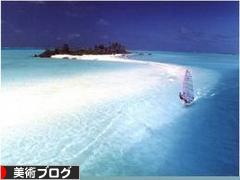[5 things successful people may always do]
Rise and shine! Morning time just became your new best friend.
Love it or hate it, utilizing the morning hours before work may be the key to a successful and healthy lifestyle.
That’s right, early rising is a common trait found in many CEOs, government officials, and other influential people. Margaret Thatcher was up every day at 5 a.m.; Frank Lloyd Wright at 4 am and Robert Iger, the CEO of Disney wakes at 4:30am just to name a few. I know what you’re thinking - you do your best work at night. Not so fast. According to Inc. Magazine, morning people have been found to be more proactive and more productive. In addition, the health benefits for those with a life before work go on and on. Let’s explore 5 of the things successful people do before 8 am.
1. Exercise. I’ve said it once, I’ll say it again. Most people that work out daily, work out in the morning. Whether it’s a morning yoga session or a trip to the gym, exercising before work gives you a boost of energy for the day and that deserved sense of accomplishment. Anyone can tackle a pile of paperwork after 200 ab reps! Morning workouts also eliminate the possibility of flaking out on your cardio after a long day at work. Even if you aren’t bright eyed and bushy tailed at the thought of a 5 am jog, try waking up 15 minutes early for a quick bedside set of pushups or stretching. It’ll help wake up your body, and prep you for your day.
2. Map Out Your Day. Maximize your potential by mapping out your schedule for the day, as well as your goals and to dos. The morning is a good time for this as it is often one of the only quiet times a person gets throughout the day. The early hours foster easier reflection that helps when prioritizing your activities. They also allow for uninterrupted problem solving when trying to fit everything into your timetable. While scheduling, don’t forget about your mental health. Plan a 10 minute break after that stressful meeting for a quick walk around the block or a moment of meditation at your desk. Trying to eat healthy? Schedule a small window in the evening to pack a few nutritious snacks to bring to work the next day.
3. Eat a Healthy Breakfast. We all know that rush out the door with a cup of coffee and an empty stomach feeling. You sit down at your desk, and you’re already wondering how early that taco truck sets up camp outside your office. No good. Take that extra time in the morning to fuel your body for the tasks ahead of it. It will help keep you mind on what’s at hand and not your growling stomach. Not only is breakfast good for your physical health, it is also a good time to connect socially. Even five minutes of talking with your kids or spouse while eating a quick bowl of oatmeal can boost your spirits before heading out the door.
4. Visualization. These days we talk about our physical health ad nauseam, but sometimes our mental health gets overlooked. The morning is the perfect time to spend some quiet time inside your mind meditating or visualizing. Take a moment to visualize your day ahead of you, focusing on the successes you will have. Even just a minute of visualization and positive thinking can help improve your mood and outlook on your work load for the day.
5. Make Your Day Top Heavy. We all have that one item on our to do list that we dread. It looms over you all day (or week) until you finally suck it up and do it after much procrastination. Here’s an easy tip to save yourself the stress - do that least desirable task on your list first. Instead of anticipating the unpleasantness of it from first coffee through your lunch break, get it out of the way. The morning is the time when you are (generally) more well rested and your energy level is up. Therefore, you are more well equipped to handle more difficult projects. And look at it this way, your day will get progressively easier, not the other way around. By the time your work day is ending, you’re winding down with easier to dos and heading into your free time more relaxed.(Forbes)








